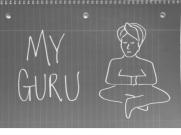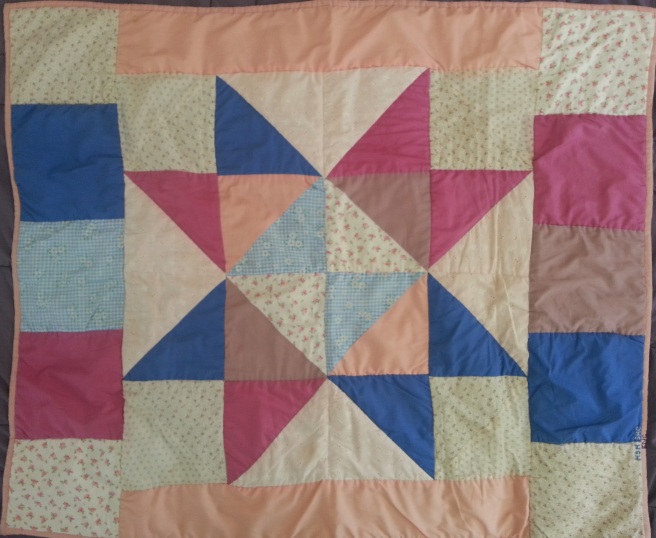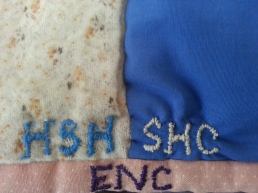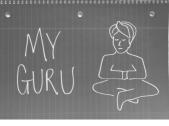This is a personal narrative my daughter Acadia wrote for her 8th grade English class. It speaks to the subtle and not-so-subtle barriers girls face and feel in the realm of technology.
Hairstyles Over HTML

I don’t belong here.
This was the first thought that came to my mind as I watched the rest the class file into the classroom.
When my mom had asked me in April if I wanted to go to a coding workshop at MIT with her, I had been reluctant. “I don’t really… like… coding very much.” I had replied. The computer teacher back at school had been teaching my sixth grade class how to code all year, and, frankly, I didn’t enjoy it all. I preferred Shakespeare over Scratch, fashion to flash drives, hairstyles over HTML, and books over MacBooks.
“Your computer teacher says you are one of the best coders in the class,” My mom had replied. “He thinks you have real potential. I agree with him.”
Still unsure of what I was getting myself into, I unenthusiastically agreed.
Now I was sitting in a room full of educators (most of them female and over 40) and their sons.
Yes, sons. Not teenagers. Sons.
The brochure had said the program was for teenagers, grades 6-12, but some of the adults had deemed it appropriate to drag their 9-year-old, socially awkward, Minecraft-obsessed sons to the program.
The grad school instructors- one male and one female, to my relief- and their professor, a middle-aged female, began to talk about the program we were going to use. I glanced around the room again. I was the only girl among fifteen boys.
Instantly, I felt like my femininity had been threatened. I was only twelve, not even considered a woman yet, but instantly I was worried. Did this mean I wasn’t feminine enough? What if I wasn’t pretty enough or graceful enough or flirty enough? I had always considered myself a feminist from a very young age, but now I was also doubting that. Did being a feminist take away my femininity? I glanced down at my outfit: yoga pants and v-neck t-shirt. I made a mental note to wear dresses more often.
I listened to the instructors as they gave us directions on how to set up an account. I picked my go-to username: music_girl_11 and changed my status to Public, like they told us to do so that the other participants could see the simulations and games we had made.
After a few more quick directions, we were told to begin. My mom and I set to work, choosing the color and shapes of the little blocks drifting across the plane on the screen. I tried to relax, but the programming was very hard. In school, we had used programs like Scratch and Code.org, which gave you a list of instructions and blocks with instructions like “Move left _____” Here, we had to type our own instructions and figure out the exact order of words and dashes. How much would this number of paces move the blocks? How do I make the shark follow the fish?
I posted my first “game” onto my account 15 minutes before our lunch break and shared it with the rest of the class online. I didn’t have enough time to start a new program, so I scrolled through the other games that had been posted. After what felt like an hour, we were released. We were told we could stay inside and eat or go outside. Naturally, after staring at a screen for about 3 hours, my mom and I opted to go eat outside. It was a beautiful if slightly chilly July day, and the MIT campus was quite beautiful.
Soon, we came across a set of benches, one of them holding two other students from the workshop: an eighth grade boy and his mother, a professor. I wasn’t exactly thrilled to have to spend my lunch break with yet another boy, but for the sake of being polite, I kept my mouth shut as my mom and I sat down across from them on the other bench.
The boy was very intelligent and not very shy. As his mother and mine chatted, he would throw in some of his own thoughts and answers into the conversation. Whenever I was asked a question, I would swallow my bite of food and give a one or two word answer. To anyone who knew me well, this would come as a surprise. I was very talkative and somewhat outgoing person, a girl who always raised her hand in class whether it was to answer or ask a question and had a large circle of friends. But at this moment, I was feeling very vulnerable and self-conscious.
And then, suddenly, the boy turned to me. “So, how do you feel about the male dominance in the workshop?” He asked me.
I was so surprised that he had noticed. I had thought for sure I was the only one who had discovered that I was the only girl in the room who hadn’t finished college.
“I’m not actually sure how I feel about it,” I replied, taken aback but strangely relieved. I laughed a little bit. “It’s kind of intimidating.”
My mom turned to me in shock. “You’re really the only girl? I didn’t notice at all!”
I nodded. “How did you not notice?” I laughed, suddenly finding the situation comical instead of daunting.
“I don’t know!” She replied, also laughing.
The boy’s mom chuckled. “I guess you’re just going to have to kick all of their butts, then.”
That’s right.
The thought came out of nowhere, but it spoke the truth. I liked the idea of proving that I could code just as well as any of the other boys in there.
I went into the classroom with renewed sense of purpose. Prove yourself, whispered a little voice inside my head.
I worked harder and pushed myself. I actually began to see why people did this for a living. Soon, I had 2 more games shared with the group.
“Who’s music_girl_11?” I looked up from my laptop and across the table at the ten-year-old boy who had asked the question. He hadn’t said it in the nicest way- in fact, he sounded almost disgusted.
If he had said this before the break, I would’ve slouched down in my chair and swore never to code again. However, I ignored his comment and tried shrug it off. It was pretty easy, considering that earlier, that same boy was struggling to post his game up on the website.
At the end of the class, the instructors showed some of the games and simulations on the SMART board and the instructor chose one of mine to show to the class. After it was finished, there was a moment of silence.
“You go, music_girl_11!” The instructor said. Though it wasn’t my best game, I felt a sense of pride. I had done it. I had learned to code, had my work displayed to the class, and proven that I was just as good at coding as any of the other boys there.
I had learned something else that day as well: I was not defined by the people who shared my interests. Liking computers did not mean I had to be glued to a computer screen 24/7. Being good at coding did not mean I couldn’t like fashion as well. Liking something boys traditionally liked more did not mean I was unfeminine.
I am who I choose to be, not who society tells me to be.
— APC, 6/15/16
 There are a lot of good resources that promote coding for girls, including Girls Who Code, Black Girls Code, Google’s Made with Code, and some that promote a more inclusive approach to coding for everyone, such as CoderDojo and code.org. The MIT workshop Acadia and I attended was very good, and I like the StarLogo NOVA programming platform, which uses visual blocks like Scratch or Blockly but allows more complex simulations. Here’s the homepage for StarLogo Education.
There are a lot of good resources that promote coding for girls, including Girls Who Code, Black Girls Code, Google’s Made with Code, and some that promote a more inclusive approach to coding for everyone, such as CoderDojo and code.org. The MIT workshop Acadia and I attended was very good, and I like the StarLogo NOVA programming platform, which uses visual blocks like Scratch or Blockly but allows more complex simulations. Here’s the homepage for StarLogo Education.

Acadia’s narrative reminds me of how much the environment in which students learn affects how they feel about the subject matter. A room full of boys was immediately intimidating and off-putting to her. And yes, I was that clueless — I really didn’t notice that she was the only girl. Encouragement from her teachers (and her mom) couldn’t compete with what she perceived as a threat to her identity. Ultimately, an ally in the classroom and motivation to prove herself carried the day. I left with two ideas; one from the lovely professor we ate lunch with, who teaches biology and uses computer models of biological systems as a “backdoor” way to get her female students interested in coding. They already love biology; the computer models are an additional tool to learn more about something they enjoy. So here’s idea # 1: Capitalize on what your target population is already interested in, and then connect it to coding. Idea #2 comes from both research and personal experience as a teacher and a learner; wherever identity is intertwined with learning, and in fields dominated by one gender, differentiation is particularly important. Students with very little experience coding may give up easily trying to keep up with others who spend much of their free time on computers.


 Once I found the a layout I liked, I pinned and stitched the pieces together to construct the front of the quilt. Without prior quilting experience or instruction, I relied on my observations of quilts to figure out how to sew the front to to the batting and the backing. As a final touch, I embroidered by grandmother’s my mother’s, and my initials on the edge of the quilt, where each of our fabrics intersected.
Once I found the a layout I liked, I pinned and stitched the pieces together to construct the front of the quilt. Without prior quilting experience or instruction, I relied on my observations of quilts to figure out how to sew the front to to the batting and the backing. As a final touch, I embroidered by grandmother’s my mother’s, and my initials on the edge of the quilt, where each of our fabrics intersected.



